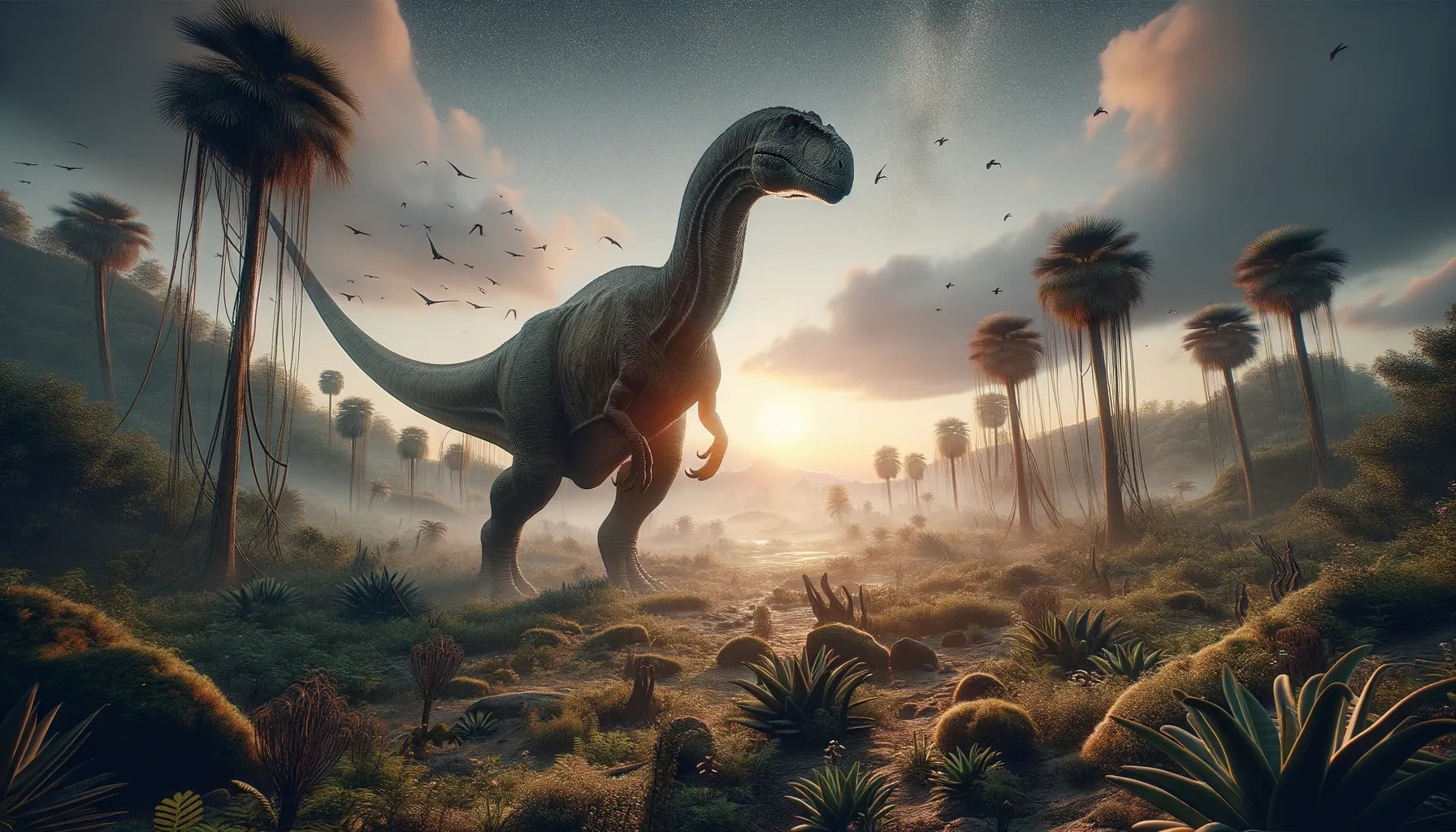
Bothriospondylus
Mighty giant of the Jurassic age!
Period
Jurassic
Length
Could grow up to 60 feet long.
Height
Reached heights of approximately 10 feet at the hips.
Weight
Estimated to weigh between 10 to 15 tons.
Bothriospondylus was a large sauropod dinosaur that lived during the Late Jurassic period. Known for its long neck and tail, it was a herbivore that roamed prehistoric landscapes in search of vegetation. Its fossils have provided essential insights into the evolution and diversity of sauropods during this period. Discovered originally in England, its remains have also been found in other regions, indicating a wide geographical range.
Diet
Bothriospondylus was a herbivore, feeding on a variety of plants. With its long neck, it could reach vegetation both high and low, making it adaptable to different plant types.
Hunting
As a plant-eater, it didn’t hunt other animals. It grazed through forests and plains, using its size to break through dense vegetation.
Environmental challenges
Adapting to changing plant resources during the Jurassic was key for survival. Its large size required substantial food intake, making it sensitive to changes in plant availability. Periodic climate shifts may have influenced its habitat range and food sources.
Speed
Bothriospondylus likely moved slowly due to its massive size.
Lifespan
Fossil evidence suggests it lived for several decades.
First discovery
First discovered in England in the late 19th century.
Fun Facts
- Bothriospondylus was a dinosaur that lived during the Jurassic period, which was a time when many famous dinosaurs roamed the Earth.
- The name Bothriospondylus means 'excavated vertebra', named for the unique features of its bones discovered by scientists.
- It was a sauropod, a type of dinosaur known for its large size, long neck, and tail, much like the more famous Brontosaurus or Diplodocus.
- Fossils of Bothriospondylus have been mainly found in what is today Madagascar and parts of Europe, suggesting it lived in a variety of environments.
- Bothriospondylus is one of those dinosaurs that remind us how interconnected ancient lands were, with its remains spread between distant continents.
- Despite its intriguing name and history, Bothriospondylus is not as well known as other dinosaurs because fewer fossils have been found.
- Studies of Bothriospondylus help scientists understand the diversity and evolution of sauropods during the Jurassic period.
Growth and Development
Bothriospondylus likely experienced steady, continuous growth throughout its life, as is common with large sauropods. Hatchlings were much smaller and vulnerable, relying on rapid growth to achieve size that deterred predators. Development from hatching to full size took several years, necessitating effective feeding strategies.
Habitat
It inhabited areas with dense foliage, likely favoring forested regions or open plains with ample plant life. Seasonal variations might have altered the type and abundance of vegetation, thus influencing migration patterns. The presence of water bodies would also be crucial for hydration and vegetation.
Interaction with other species
Coexisted with other herbivorous and carnivorous dinosaurs, competing for resources with other plant-eaters. Its massive size offered protection from most predators, influencing predator-prey dynamics. Likely had little direct interaction, with most interactions being competitive or avoidance-based.
Natural lifespan
Bothriospondylus may have lived up to 70 years in the wild.
Reproduction
Reproduced by laying eggs, likely in a nesting ground to protect from predators. Females may have laid numerous eggs at a time to ensure some hatchlings would survive. Parental care post-hatching was minimal, with juveniles growing rapidly to evade predators.
Social behaviour
May have lived in herds, offering protection against predators. Social structure possibly centered around mating and migration, with temporary gatherings during these periods. Herding would provide enhanced protection for younger members against predators.
Fossil locations
Initially discovered in England, fossils have also been located in France and Madagascar. These discoveries highlight both the spread and variation within the species. The dispersal of its fossil remains suggests a widespread prehistoric presence.
